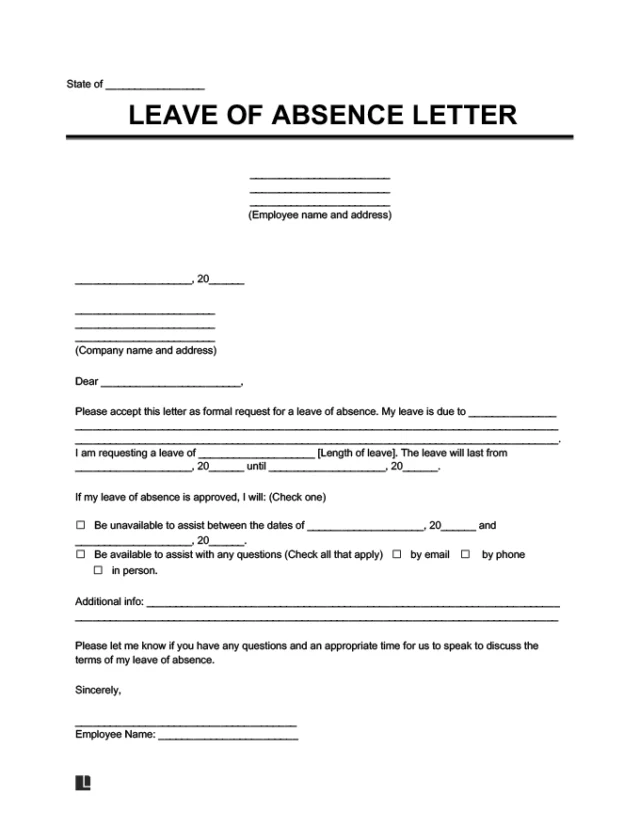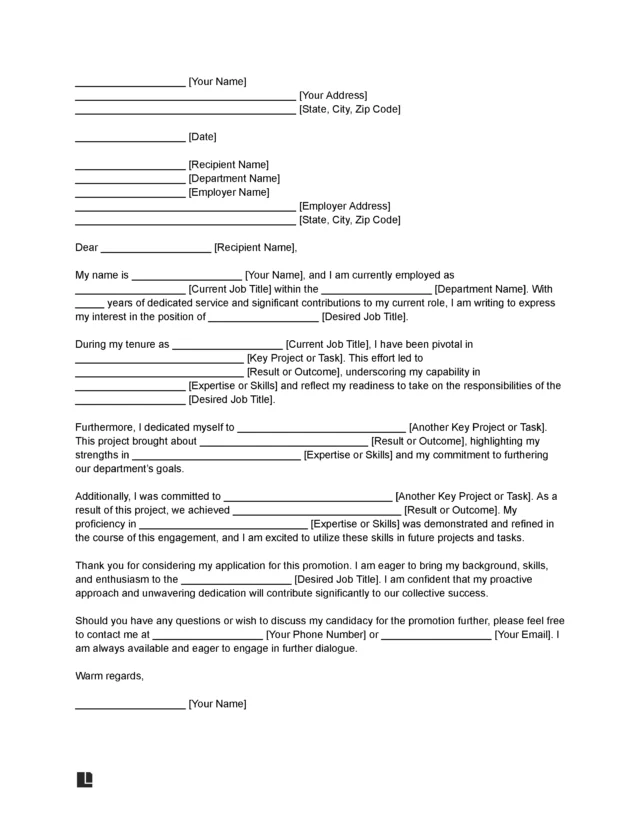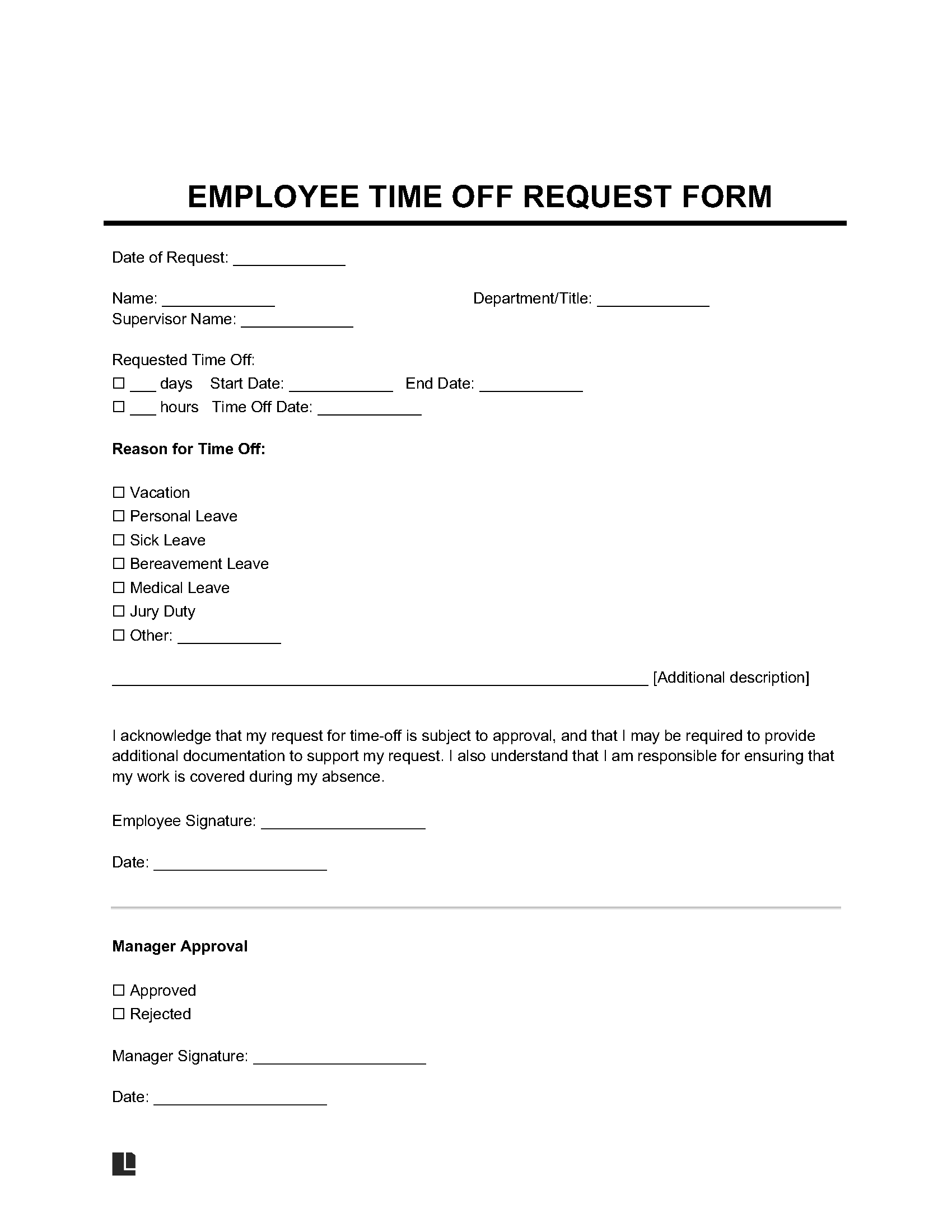What Is an Employee Time-Off Request Form?
An employee time-off request form is a written document that allows an employee to ask their employer for time off of work. This form allows the employee to clearly describe their need and create a formal written record of their request.
Many employers require a written request for their records, and our template can help streamline that process. The form should include a spot for the employer to approve or deny the request.
You should use a time off request form for:
- Vacation
- Illness
- Injury or disability
- Maternity or paternity leave
- Bereavement
- Jury duty
- Military service or training
What to Include in a Time Off Request Form
Your time off request form should include every detail your employer needs to know to approve your request. Using a time off request form template can help both the employee and employer experience a more seamless process.
Include the following details on your form:
- Date of request: When you’re submitting the form
- Your name and title: Include your role and department
- Supervisor’s name: Who should review the request
- Requested time off: List dates or hours you’ll be away
- Reason for request: Select the type of leave (vacation, sick, etc.)
- Employee signature: Sign and date to confirm the request
- Manager approval section: Leave space for your supervisor to respond
How to Request Time Off from Work
Need time away from work? Here’s how to make your request clear, timely, and easy to approve.
1. Determine Which Type of Leave You Want to Request
Choose the type of time off you need—vacation, sick leave, personal days, or something else. Some leave types may require documentation.
2. Review Your Company’s Policies
Check your company policy documents for how requests should be submitted, if there are blackout dates, and how far in advance notice is required.
3. Check Availability
Look at your schedule and team coverage. Avoid busy periods or overlapping with others’ time off, if possible.
4. Talk to Your Manager
Give your supervisor a heads-up early. Ask what you can do to prep your team before you’re away.
Average PTO Allowances
Many full-time employees receive 10–14 days of paid vacation after one year, according to the US Bureau of Labor Statistics.
5. Submit Your Request
Use our time off request form to clearly list your dates and reason for time off. Include supporting details and documents if required. If you don’t get a response after a few days, check in with your manager or HR.
6. Let Your Team Know
Once your time-off request is approved, inform your coworkers that you will be out of work and for how long. This is not only polite but also essential for their work. It helps them plan for your absence and cover your duties while you are away.
You can decide how much to share about why you are taking time off, but giving your coworkers a courtesy notice is good practice.
Employee Time Off Request Form Sample
Below, you can see what a sample employee time off request form looks like. You can customize this form by using our document editor and then download it in PDF or Word format.
Frequently Asked Questions
Can I cancel a time-off request?
Yes, you can cancel a time off request if you need to. Notify the supervisor or manager who approved your initial request that you want to cancel as soon as possible. They may require that you cancel your time off request in writing.
Can an employee ask for vacation pay without taking time off?
In most cases, vacation pay is only issued when time off is actually taken. Some employers may allow cash-out of unused vacation, but this depends on company policy and local laws. Check your employee handbook or ask HR.
Why would a time-off request be denied?
Your employer may deny a time off request for several reasons, including the following:
- You didn’t provide a formal written request.
- You didn’t provide the necessary supporting documentation for your request.
- You are out of paid time off.
- Your reason does not qualify for leave.
- The time you requested off is during a busy season.
- Other employees are also out on leave.
Why is it important to follow the time off request process?
Following the request process ensures fairness, proper planning, and clear communication. It helps managers coordinate coverage and minimizes disruption to the business, benefiting both the employee and their coworkers.





